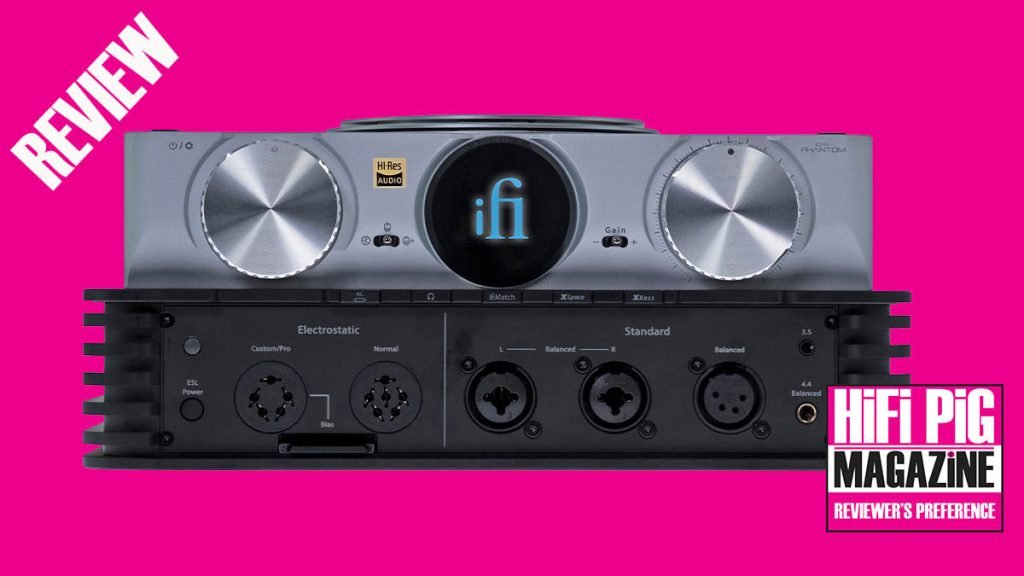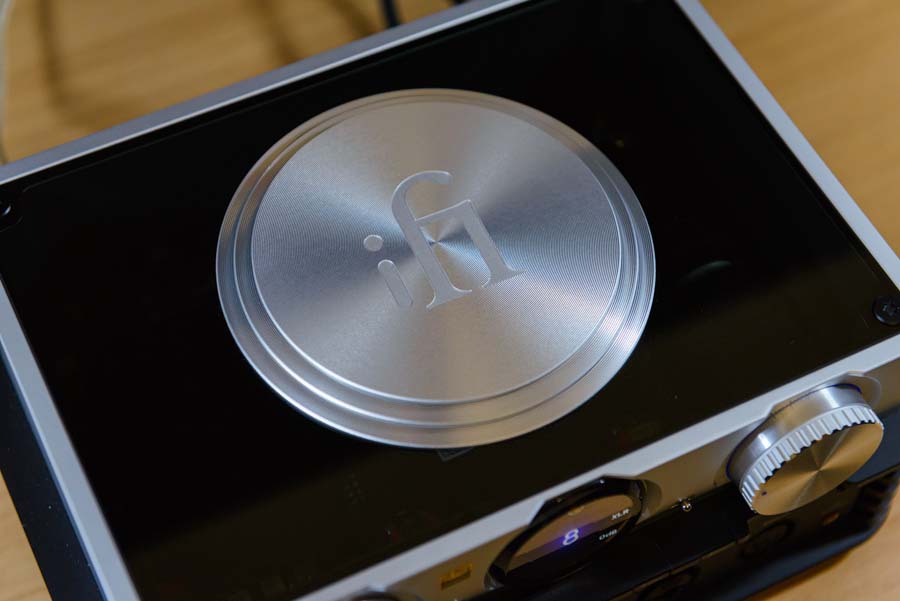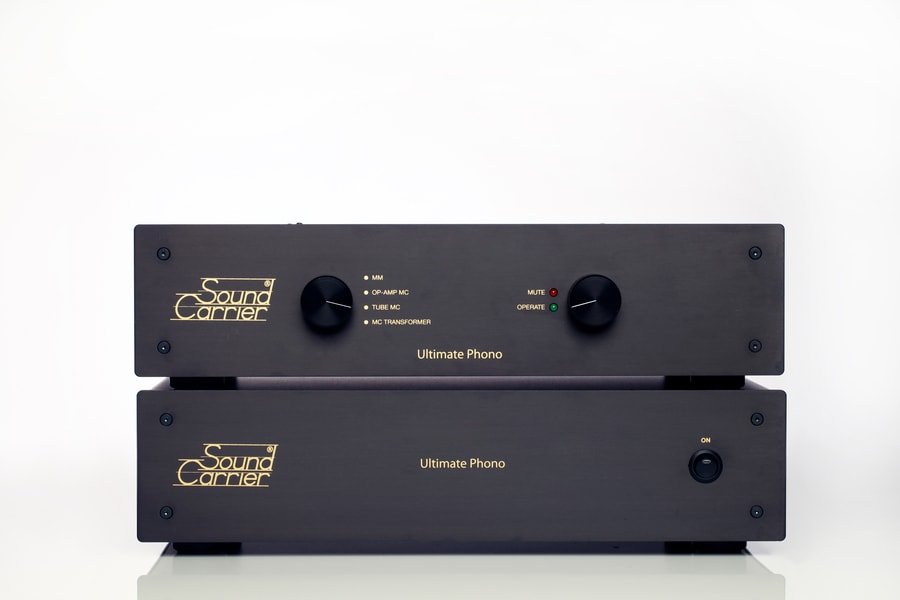iFi AUDIO iCAN PHANTOM REVIEW
ifi Audio iCAN Phantom is a £3749 and is touted by iFi as being the only headphone amplifier you will ever need. Oscar Stewart takes a listen to see if this is really the case.
Ifi Audio are a very established brand in the portable audio and headphone world, they have a strong following and are the sister company of Abbingdon Music Research. IFi Audio manufactures a large range of DACs, DAC/Amps, Dongles, headphone amps, and tweaks. In this review, we are looking at one of their flagship products, and their flagship headphone amplifier, the iCAN Phantom.
The iCAN Phantom promises to be the only desktop headphone amplifier you need, boasting huge output power for hard-to-drive planners, an energiser stage for driving electrostatic headphones, and quiet background for even the most sensitive of in-ears. Coming in at £3749 it’s not a cheap headphone amp but, the number of features and functionality promise to make this excellent value for money…on paper, at least.
BUILD QUALITY AND FEATURES OF THE iCAN PHANTOM
The iCAN Phantom comes well packaged and, for a headphone amp, it has some weight to it. Unboxing was a breeze and I had the amp in place and set up quickly. The main chassis is made of aluminium and the design is a little odd as many mentioned when this product was released – it looks like one unit stacked on top of another. The top section is typically iFi with a silver finish, but the bottom half with the inputs/outputs is matte black with a finned design to help with heat dissipation. The top cover is made of glass with a machined round disc with the iFi logo embossed in it and you can see some of the inner workings through the glass including the 5670 valves inside – a nice touch in my opinion.
On the back of the amp, you have inputs and outputs, this includes 3 pairs of RCA inputs and 1 pair of XLR inputs, output wise you get 1 pair of RCA and 1 pair of XLR which work as pre-outs – perfect for running into a pair of powered speakers or power amp.
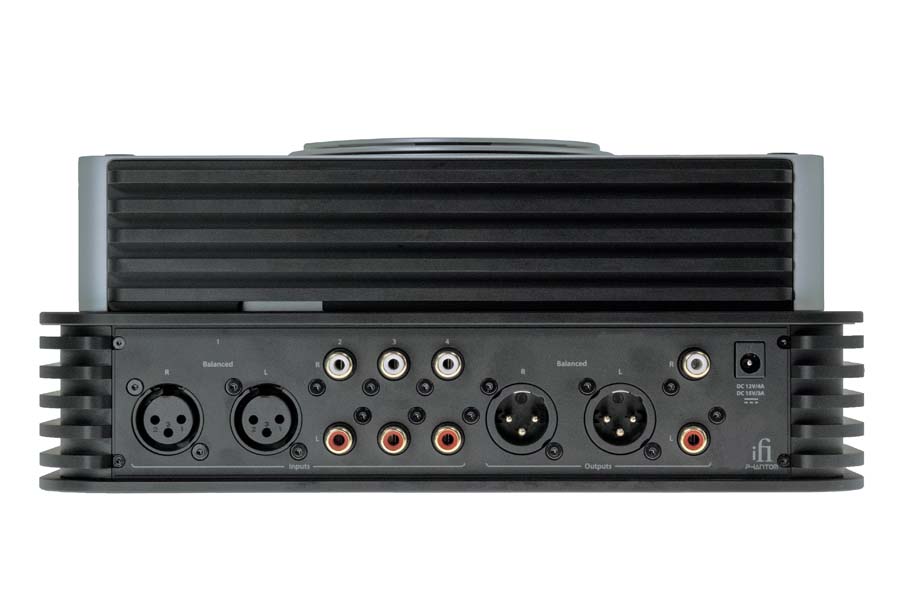
On the front you have 2 big knobs, one controls the input selector and power along with allowing you to get into the main menu, the other is purely for volume. Between these knobs is a display that shows you the volume level and output settings, either side of this display are switches, one for the valve mode, the other for changing the gain setting.
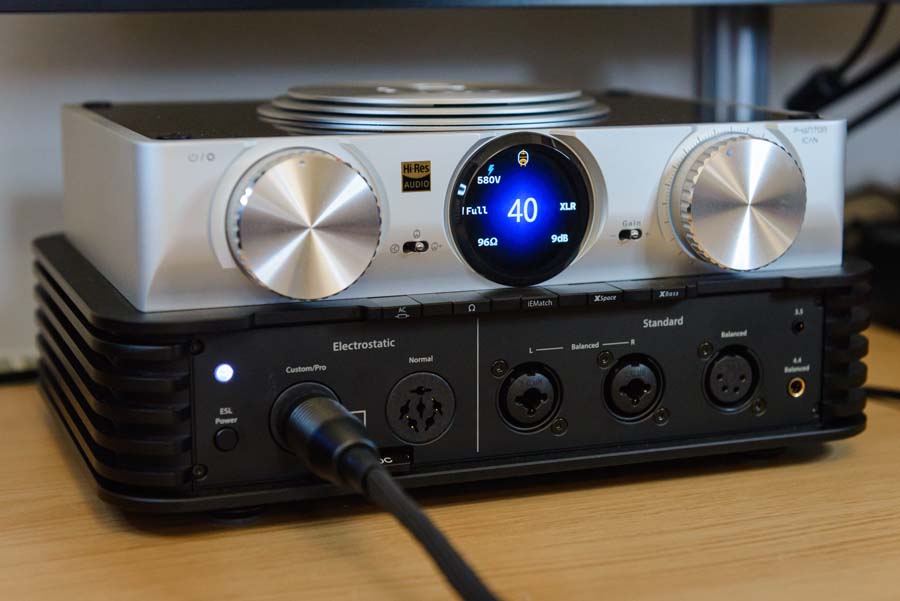
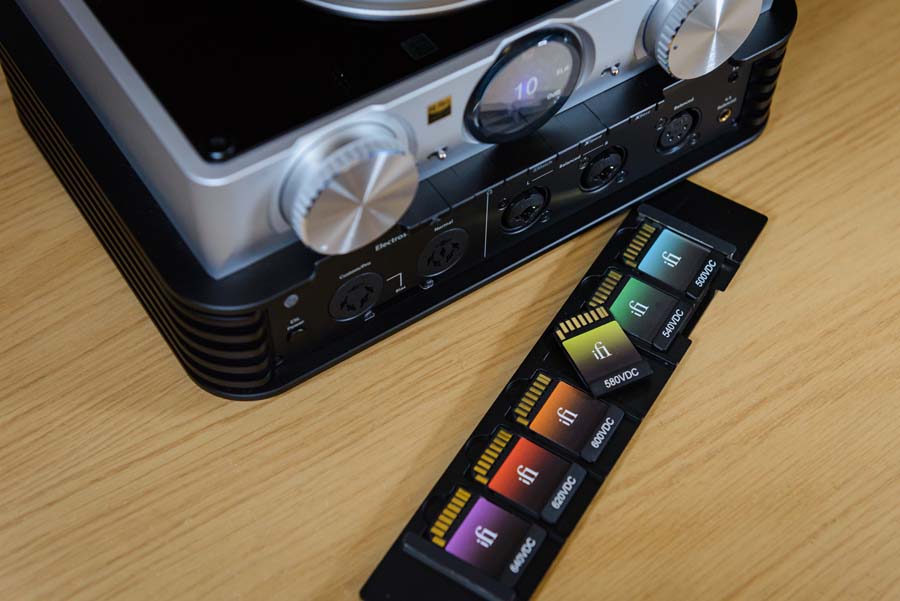
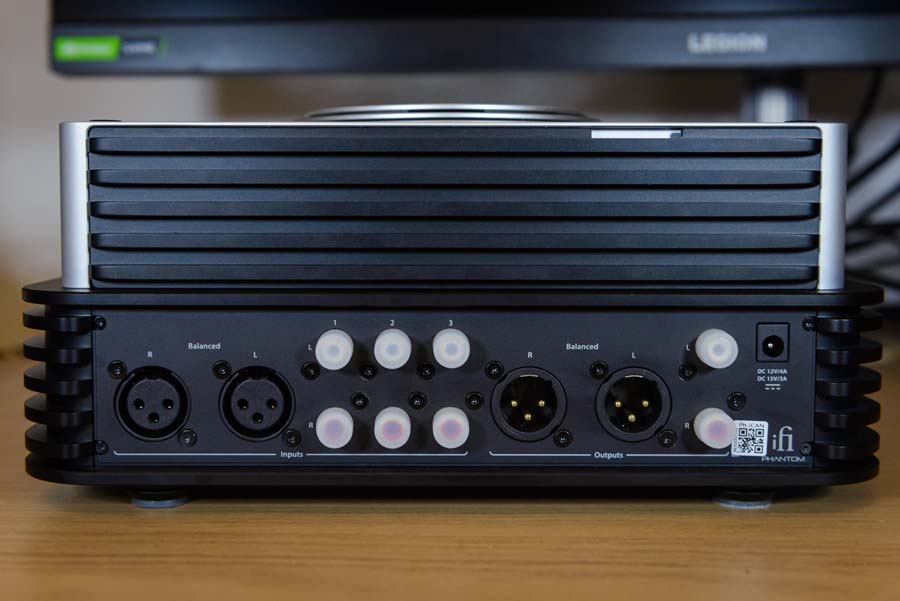
Underneath these you have 5 buttons, 2 of these are for the electrostatic output (AC mode and Impedance), 1 is for the iEMatch function, another for XSpace and the last one is for XBass – more on these features later.
You will find the ESL power button to enable the ESL section next to the 2 x 5-Pin outputs for electrostatic headphones, one is for Custom/Pro bias and the other is for Normal bias, then you have 2 x 3-pin XLR/6.3mm combo outputs which can be used with either 2 x 3-pin XLR balanced cables, or as single-ended 6.3mm outputs. Lastly, you have a 4-pin balanced XLR output, 4.4mm balanced output, and 3.5mm single-ended output – this means you shouldn’t have any trouble hooking your headphones up to this amp whatever their connections.
This is a feature-packed amp and it’s difficult to know where to start, but the electrostatic section seems like as good a place as any. Firstly, there are 2 x 5-pin outputs, one is for normal 230v bias and the other is for Custom/Pro bias. The iCAN Phantom comes with a magnetic plate that fits onto the rear panel in which you will find “SD card” bias cards, this allows you to set the bias for your headphones, between 500v and 640v. This enables you to select the right bias for your headphones, along with allowing you to slightly fine-tune the sound by using a lower bias than the headphones require (never use a higher bias voltage than your headphones are rated at).
You can also tune the AC output when in ESL mode, this allows you to change between making the bias node that is shared between both channels high impedance, or low impedance for audio signals. According to iFi, this affects a complex set of parameters but in this amp, it makes an audible difference of the presentation when XSpace is enabled.
Additionally, there is an impedance setting when using the ESL section, this is a little simpler and affects the load impedance the amp sees when using electrostatics. IFi Audio recommends leaving this quite high (64 or 96Ohms) as it’s an easier load on the driving amplifier, but you can set this to your listening preference.
There are 3 gain modes on the iCAN Phantom, 0dB/9dB, and 18dB and this should be set according to the headphones you are using, iFi recommends having listening levels around 12 O’Clock, so if you are using a lot more of the volume knobs travel you can try upping the gain. For electrostatics a gain of 9dB is normally fine for most headphones and listening volumes.
Much like the original Pro iCAN, the iCAN Phantom includes iFi’s valve stage. This allows you to choose between a full Class-A solid state amplifier that uses J-FETs or having 2 x NOS GE5670 valves replace the J-FET stage before the Class-A amplification stage. There are 2 valve settings, Tube and Tube+. The first is a more conventional valve stage whereas Tube+ reduces negative feedback to a minimum allowing for more of the valves’ natural harmonics to come through.
The amp will turn the valves off after 10 minutes in solid-state mode to prolong their life, so switching back to valve mode requires a short warm-up period. The GE5670 should last around 100,000 hrs of use and they are socketed for easy replacement by simply removing the glass lid of the amplifier. You can see the number of hours the valves have on them in the menu and you can reset this counter if you swap them out.
iEMatch is a switch that turns this function on/off – it reduces the output level so the amp can be used with sensitive headphones and IEM’s.
XSpace can be used with headphones or speakers (via the pre-outs on the back) and automatically switches between these modes. There are 3 steps of XSpace, 30/60/90 – this is an all-analogue circuit that aims to create a more out-of-head listening experience, like cross-feed circuits featured on some amps. ifi states that this feature acts like crossfeed, but without the downsides, and the different angles produce different widths of sound, this allows you to set it to your own preference.
XBass is essentially a bass boost circuit, once again in the analogue domain, with 3 levels. This function works for headphones and loudspeakers, 10Hz is for products missing a little bass from 40Hz and below, 20Hz is for products that are missing some bass from 80Hz and below, and, lastly, 40Hz is for products missing substantial bass from 120Hz and below.
There is an app you can install on your phone (iFi Nexis) that allows you to connect to the iCAN Phantom, I tried this and managed to connect, it did, however, take a few tries to pair the amp with my phone. Once paired you can use your phone as a remote for the amp along with showing you some stats on the valves installed (bias voltages). The main thing the app is good for though, is firmware updates, so I highly recommend getting the app and pairing if you can for this feature alone.
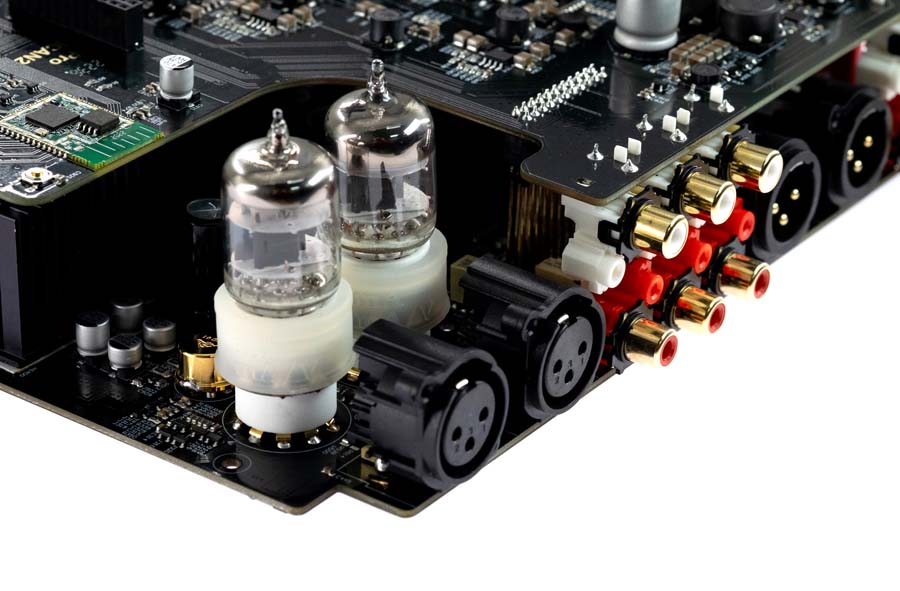
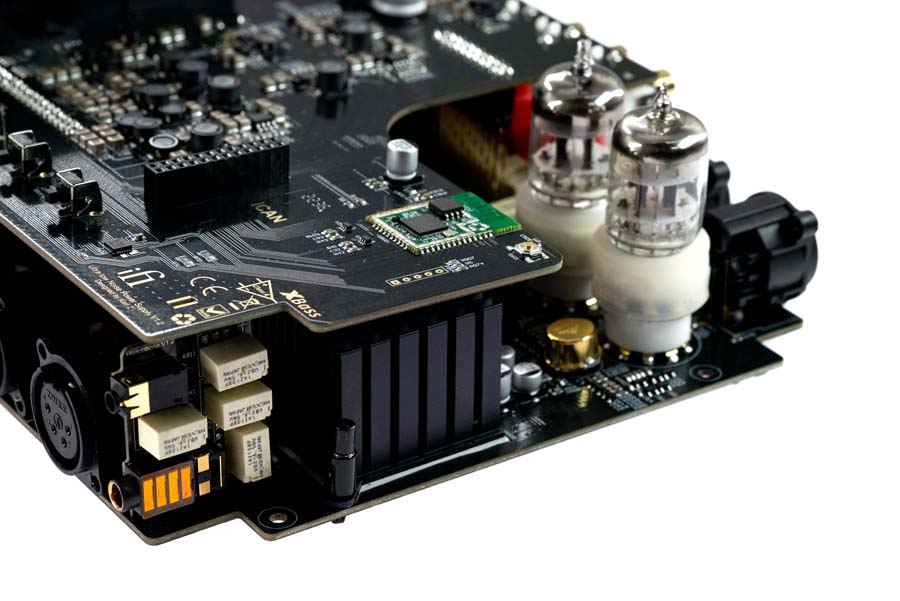
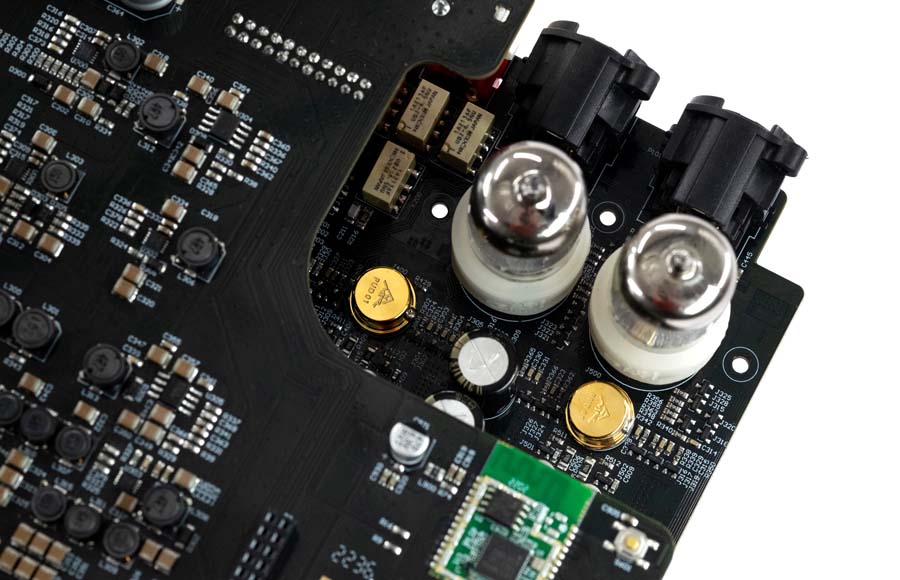
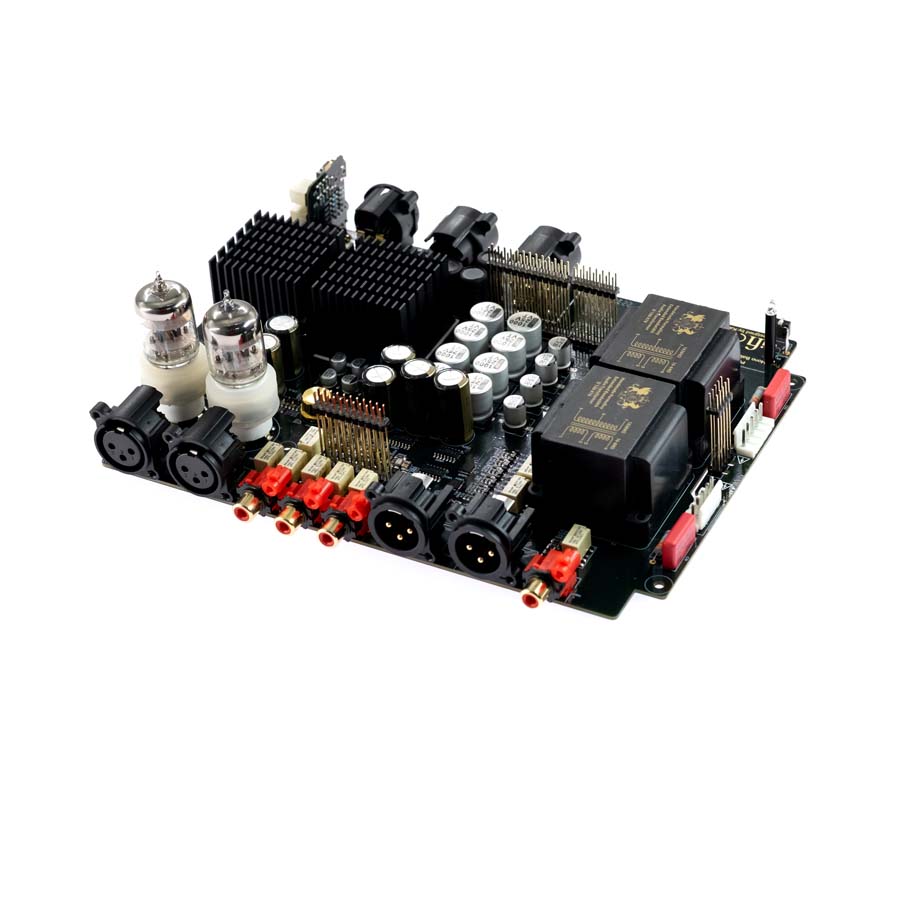
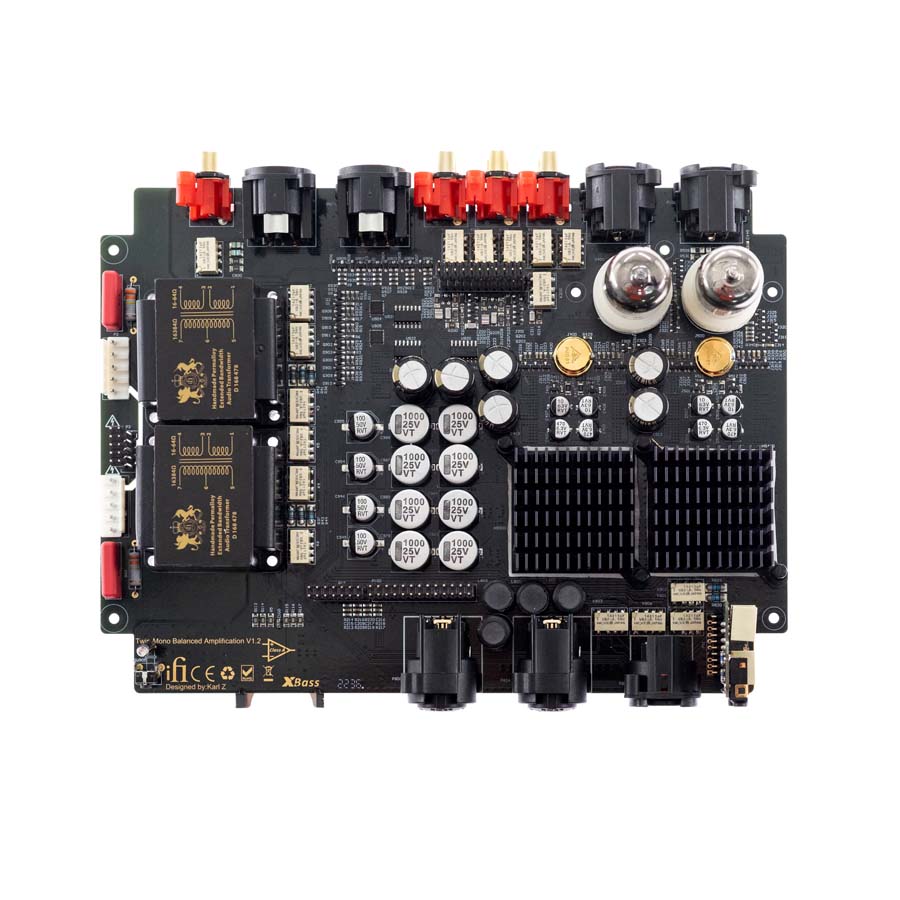
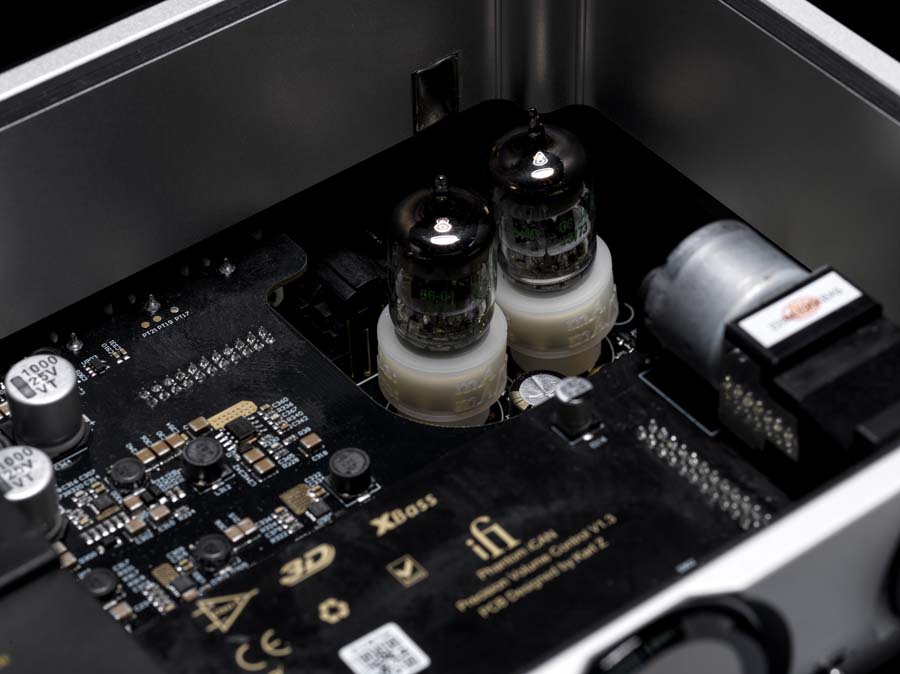
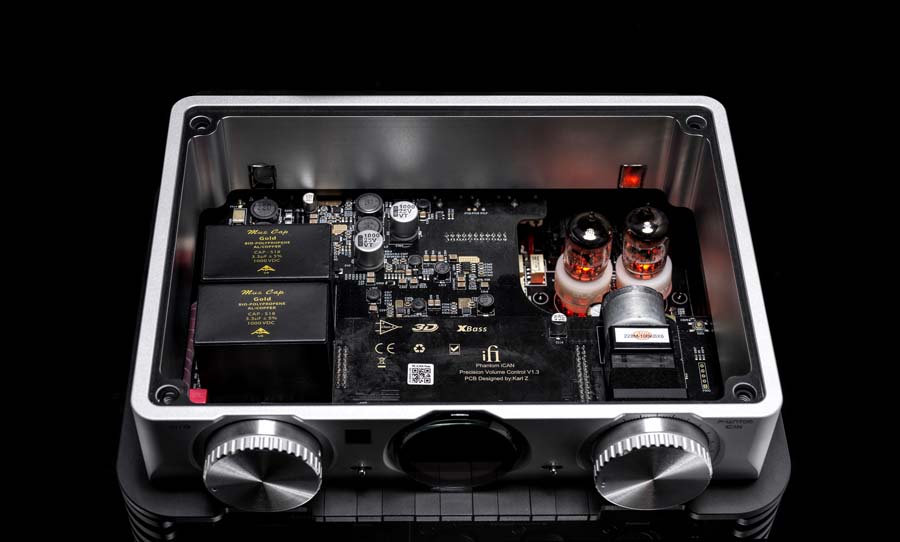
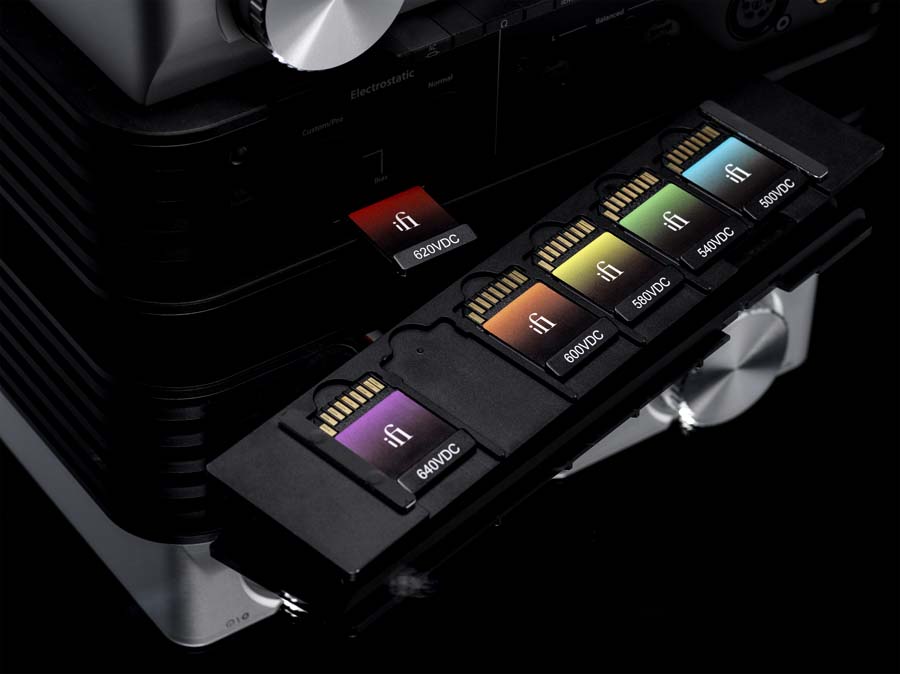
SOUND QUALITY
For reference purposes I used the SMSL D6s DAC via its balanced outputs into the iCAN Phantom, this DAC offers a neutral and flat output which is excellent for testing downstream components without imparting its own flavour.
The electrostatic energiser is one of the key features of the iCAN Phantom, and this sets it apart from many other headphone amps, so I decided to try this section first. K&S Distribution was kind enough to loan me their demo pair of Audeze CRBNs to use for this section of the review. As some of you may know, I’m not always the biggest fan of the typical electrostatic sound however, I do appreciate them from a technical perspective. So, setting my personal preferences aside I slotted the 580v card into the iCAN Phantom, set the gain to 9dB, impedance to 96Ohms, and AC mode to full, and started listening to some music.
First off, the iCAN Phantom runs the CRBN with ease, the energiser section of this amp is superbly designed and I cannot detect a hint of noise from anywhere. In solid-state mode the sound is beautifully balanced and expertly controlled, it’s a reference-sounding amplifier with a huge amount of detail but without any emphasis on any part of the spectrum. Listening to the kind of music that works well on electrostats, City and Colour – If I Should Go Before You, for example, there is a huge sense of space from the sound of this combo. It digs deep into the recording, the acoustic guitar having beautiful timbre and vocals come across with convincing tonality. There is a huge amount of resolution and detail retrieval without sounding clinical, this is an open and airy sounding combo with body when required.
Listen to well-recorded music and you will be rewarded with excellent sound from an electrostatic headphone paired with the iCAN Phantom. If you are a fan of Jazz, Classical, Acoustic, and the like then this system is very impressive. Celeste – Hear My Voice (Live from Abbey Road) sounds simply stunning through this setup, such an effortless and well-separated sound that hides nothing, yet sounds so natural and real.
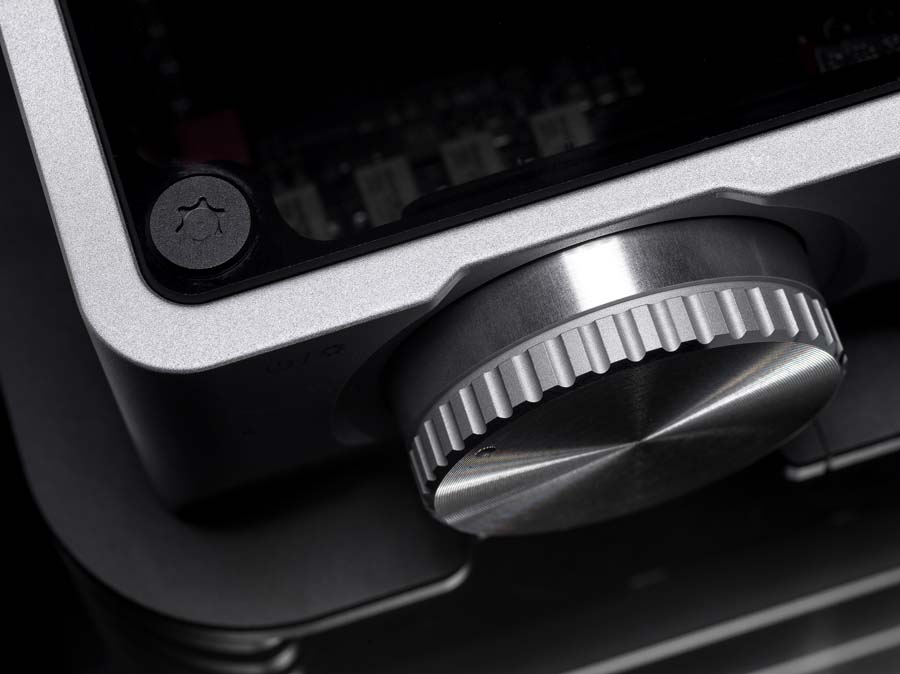
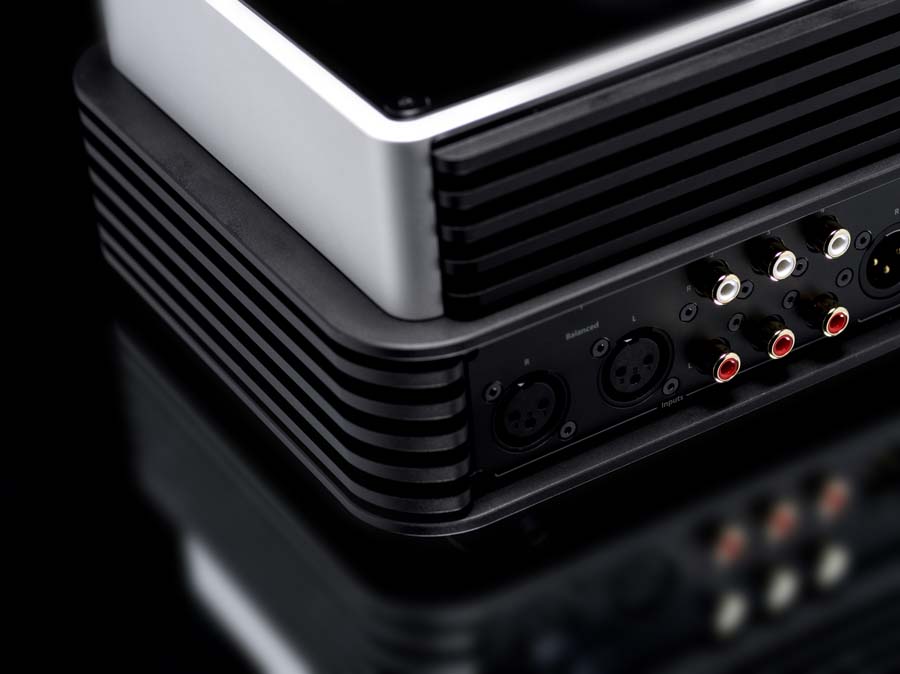
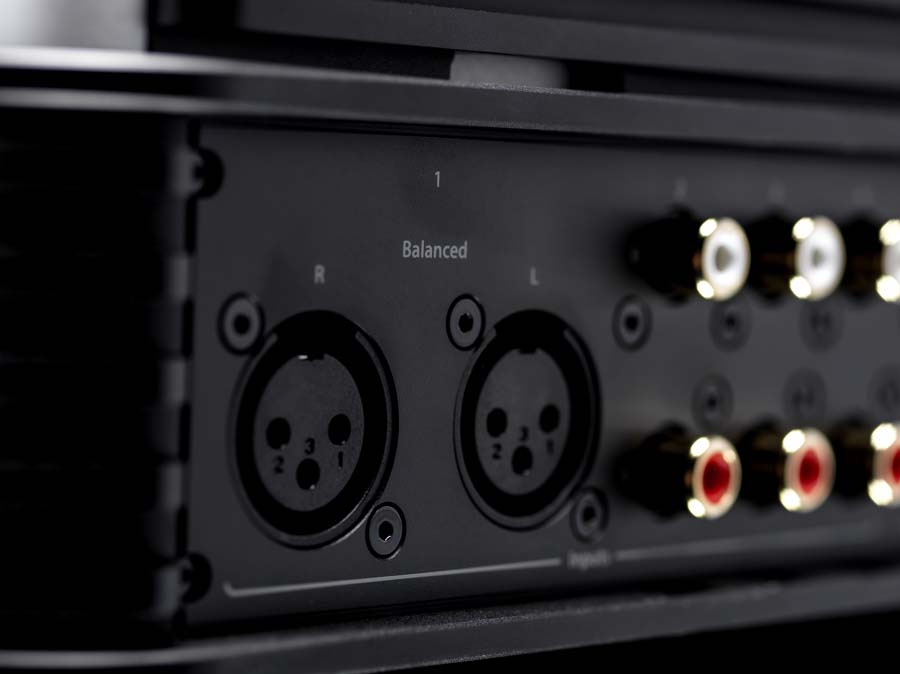
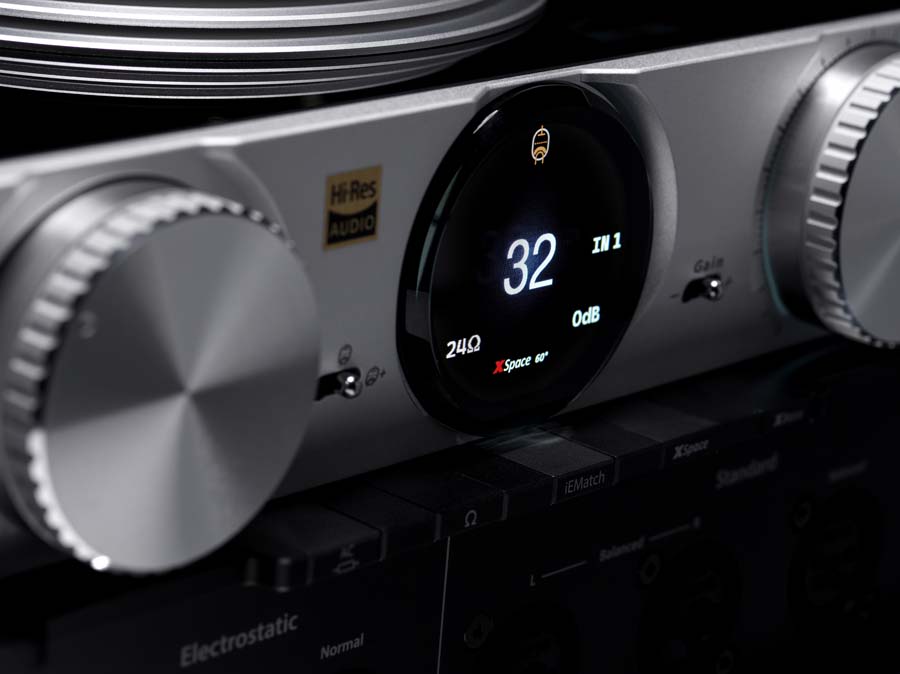
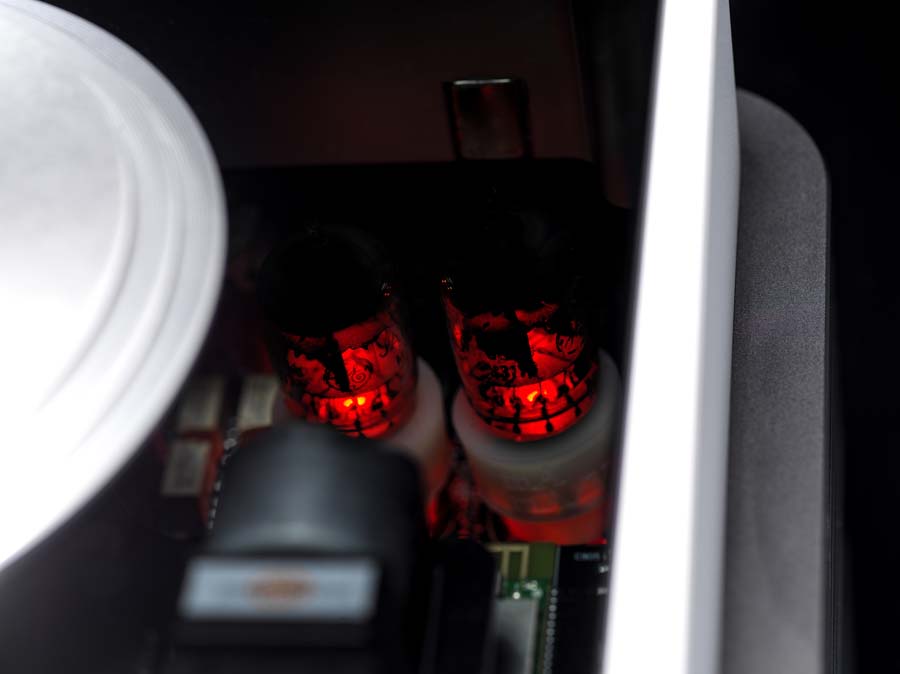
If you find your headphones lacking a little bit of body you can switch XBass on to the lowest level and bring out a hint more body and bass presence without affecting the midrange and treble. Electrostatic headphones still won’t deliver thumping bass, but it does give a nice subtle lift to the low end which can be very enjoyable.
You also have the tube modes you can combine with the ESL stage. Regular tube mode is subtle and the GE5670 valves that iFi use in the iCAN Phantom do have quite a linear sound for valves. But in this mode, there is a slight softening of transients that makes the sound blend and flow a little more naturally. Tube+ mode brings out more of that valve sound that many of us enthusiasts love and this works very well with electrostatic headphones in my opinion.
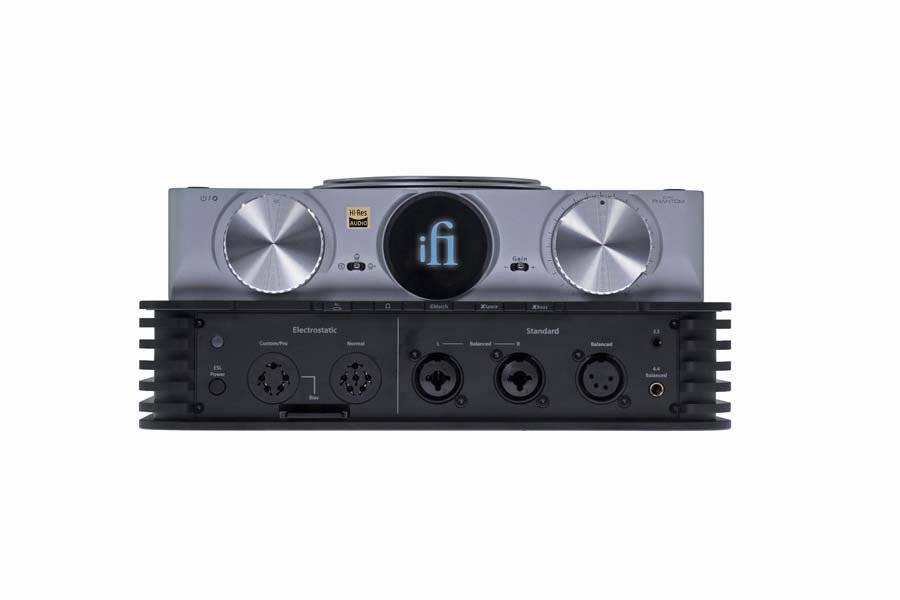
Next up the HiFiMAN Susvara, not an easy load for most headphone amps out there, but the iCAN Phantom has no issues driving these to deafening levels. Even on low-gain when fed by a balanced input these get to normal listening levels with ease, only requiring 9dB of gain when playing quieter music. Compared to the slightly warm tilt of the Violectric DHA-V226 I recently reviewed, the iFi amp comes across as more linear and crisper in solid-state mode, but it’s still not what I would call a cold and lifeless amp, it just lacks colouration.
The Susvara handle anything you throw at them and the snappy and responsive iCAN Phantom allows them to easily keep a grip of complex mixes without ever sounding muddy. These headphones have great punch and this amp doesn’t hold them back, this is one reason why I personally prefer planar headphones over electrostatic, they have similar responsiveness but with better impact, in my opinion.
These can handle heavier music, put on some metal and these just present it in such a brilliant way that is both engaging and impressive on a technical level. Architects – Gone with The Wind hits with authority, but Sam Carter’s vocals are hauntingly good on this track, it gave me goosebumps when listening through the Susvara with the iCAN Phantom in Tube mode. The different guitar lines are easily distinguishable but there’s always a thick foundation from the drums and bass guitar, once again showing this amp can handle whatever combo you throw at it and deliver superb sound.
Turning on the iEMatch I then plugged in the Westone MACH80s to see how this amp would handle some sensitive IEM’s – and there is zero background noise when using these, an impressive feat from such an amp. When being fed by quite a high output DAC like the SMSL D6s I did find that even on the lowest volume setting of 1 I was getting comfortable listening volumes and so you may fare better with using the RCA inputs when using a sensitive pair of earphones.
For these, I did find solid state mode to work the best and the sound was once again clean and detailed, a true reference amp for a reference pair of headphones. I found that enabling XBass added a little too much to these in-ears, and the XSpace settings also didn’t quite compliment the sound of the MACH80s. Mayday Parade – I Can Only Hope is articulate and well controlled, the low end has good impact and the snares are lovely and crisp, vocals and guitars are well placed within the mix and the treble is well extended. This amp can handle sensitive IEM’s without an issue, once again highlighting the versatility of the iCAN Phantom.
It didn’t matter what headphones I threw at the iCAN Phantom, high or low impedance, balanced or single-ended, planar or dynamic, it always managed to drive them with an effortless quality whilst remaining incredibly transparent. It’s an amp that, in solid state mode, doesn’t ever try to colour or change the sound from the source to the headphones, but it allows you to colour the sound should you wish using its plethora of features.
I didn’t find myself using the XSpace function much with most of the higher-end headphones I tested, but on the Grado SR80i I found the lowest setting to actually sound very natural. It throws the sound out from the headphones a little and makes them a tiny bit less fatiguing, a feature that will work with some headphones and songs better than others.
The same goes for the XBass setting. For the most part, I tended to leave it off, but once again with the Grado SR80i I found the lowest setting to sound fun on a headphone that some people can find a little fatiguing.
The tube settings are something that I am a big fan of, though. I enjoy valves and I do think they add to the sound on a subjective level. In the first Tube mode, the iCAN Phantom still retains a snappy and controlled sound with just a slight edge taken off the transients, and perhaps a tiny bit of warmth comes through from the harmonic distortion. This is nice if you just want a subtle hint of valve sound without taking away from the technicalities. Tube+ mode on the other hand does inject more warmth into the sound, making it overall smoother and softer than solid-state mode. This won’t be to everyone’s taste, but it is highly enjoyable on those headphones that tend to be a little too linear in their stock form.
Most of these features can be used when the iCAN Phantom is working as a pre-amp too, allowing you to increase the bass presence of your small desktop monitors, or widening the sound if they are placed too close together. The inclusion of a remote along with the ability to remotely control the amp from your phone are great features if you want to use it as a pre-amp, or even a headphone amp that’s placed a little further away from your listening position.
QUIBBLES
The volume control display isn’t always in proper sync with the dial, meaning you can change to 40 and it will then read out 43 when you remove your hand – a very minor quibble I know.
CONCLUSION
ifi Audio call this the Rolls Royce of flagships – and I cannot argue with that. It features a reference class solid-state headphone amplifier stage that can be tweaked to your preference with the inclusion of a valve stage, XSpace, XBass, and iEMatch. This headphone amp even includes a well-implemented electrostatic energiser circuit for all the electrostatic lovers out there, making this one of the most versatile and feature-packed headphone amplifiers I have had the pleasure of using.
It’s worthy of its flagship status, this has all the features you could possibly want without skimping on the sound quality, not forgetting that it’s also a powerhouse that can drive nearly every headphone currently on the market.
AT A GLANCE
Build Quality And Features:
Solid build
Huge array of features that are functional
One of the most versatile headphone amps on the market
Sound Quality:
Reference class sound when in solid-state mode
Valve stage adds some tube warmth
Super clean with a pitch-black background
Value For Money:
Based on the features, build quality, and versatility it really is very good value for money
We Loved:
The flexibility to run most headphones and sound great doing so
The valve stage adds some flavour to the sound, this is subjectively enjoyable
We Didn’t Love So Much:
The sensitivity of the volume knob when it comes to the digital display
Elevator Pitch Review: This is pretty much all the headphone amplifier a headphone enthusiast could need. It has a clean reference sound but you can tailor it to your liking by going through the valve stage or enabling XBass/XSpace circuitry. It’s hugely versatile and will run most headphones on the market with ease. It’s immensely capable and a joy to both use and listen to.
Price: £3749
Oscar Stewart
SUPPLIED SPECIFICATION
Gain: 0dB, 9dB and 18dB user-selectable
Frequency Response: 0.5Hz to 500kHz(-3dB)
Output Power: Balanced >15,000mW (@ 16Ω) / UnBAL >5,760mW (@ 16Ω)
Output Voltage: Balanced >27.0V (@ 600Ω) / UnBAL >14.0V (@600Ω)
ESL Output Voltage: Custom/Pro 640V RMS max / Normal 320V RMS max.
Input voltage: DC 12V/4A or 15V/3A (Phantom iCAN)
Input voltage: AC 85 – 265V, 50/60Hz (iPower Elite)
Power consumption: < 27W idle, 75W max
Dimensions: 256 × 185 × 120 mm (10.1″ x 7.3″ × 4.7″)
Net weight: 4.2 kg (9.3 Ibs)
This is easily an editor’s choice, but I understand it won’t be easy to get it to you – so 5 hearts
















































